Cyclingnews Verdict
Fillmore valves do solve a couple of problems and generally don’t hurt anything. They do require a specific sealant injector though, and it’s slightly harder to change tyres. This is an upgrade but less drastic than some reports.
Pros
- +
Eliminates sticky valve cores
- +
Reasonable cost
- +
Allows sealant to be injected
Cons
- -
Requires a specific sealant injector
- -
Requires that you keep track of the cap
You can trust Cyclingnews
If you are thinking about picking up something from our list of the best road bike wheels for this summer's riding, you may well be thinking about tubeless. Sure, you could run a tube, but from a performance standpoint alone tubeless pips tubes. You can choose between hookless, or one of a few options that have retained a hooked design and you get all the benefits that tubeless brings with it: Run lower pressures for a faster, more comfortable, ride with less possibility of a puncture. If you do get a puncture it might seal without you ever knowing, and if not you can use a plug kit or even put in a tube if you have to. The only drawback is tubeless tyre setup.
Price: £34.99 / $49.99, £39.99 / $59.99, £44.99 / $69.99
Size: 50mm, 70mm, 90mm
Weight: a single 70mm as measured for one valve with cap, 8g
Colour options: oil slick, black, purple, green, blue, red, gold, orange are available as an extra charge of £6.99 / $9.99 for a pair of new caps and retaining rings
Some people will tell you that tubeless tyre setup isn't a big deal while others will say it is a huge hassle. What's important to understand is that no matter what, it's different. It will require different skills and different tools and there are different tricks. One piece of that puzzle is the valve system that you choose to go with.
Fillmore valves are an invention that comes from Reserve wheels. The brand claims the Fillmore valve "represents a game-changing leap forward in technology, with a high-flow design" and it's been out for a while now. What's fairly new is a longer length version that is usable with modern deep road cycling wheels. Given that there was now something that I could use, I was game to see if a special valve was a meaningful upgrade. Keep reading to see if this is the accessory you need to make your tubeless setup as easy as promised.
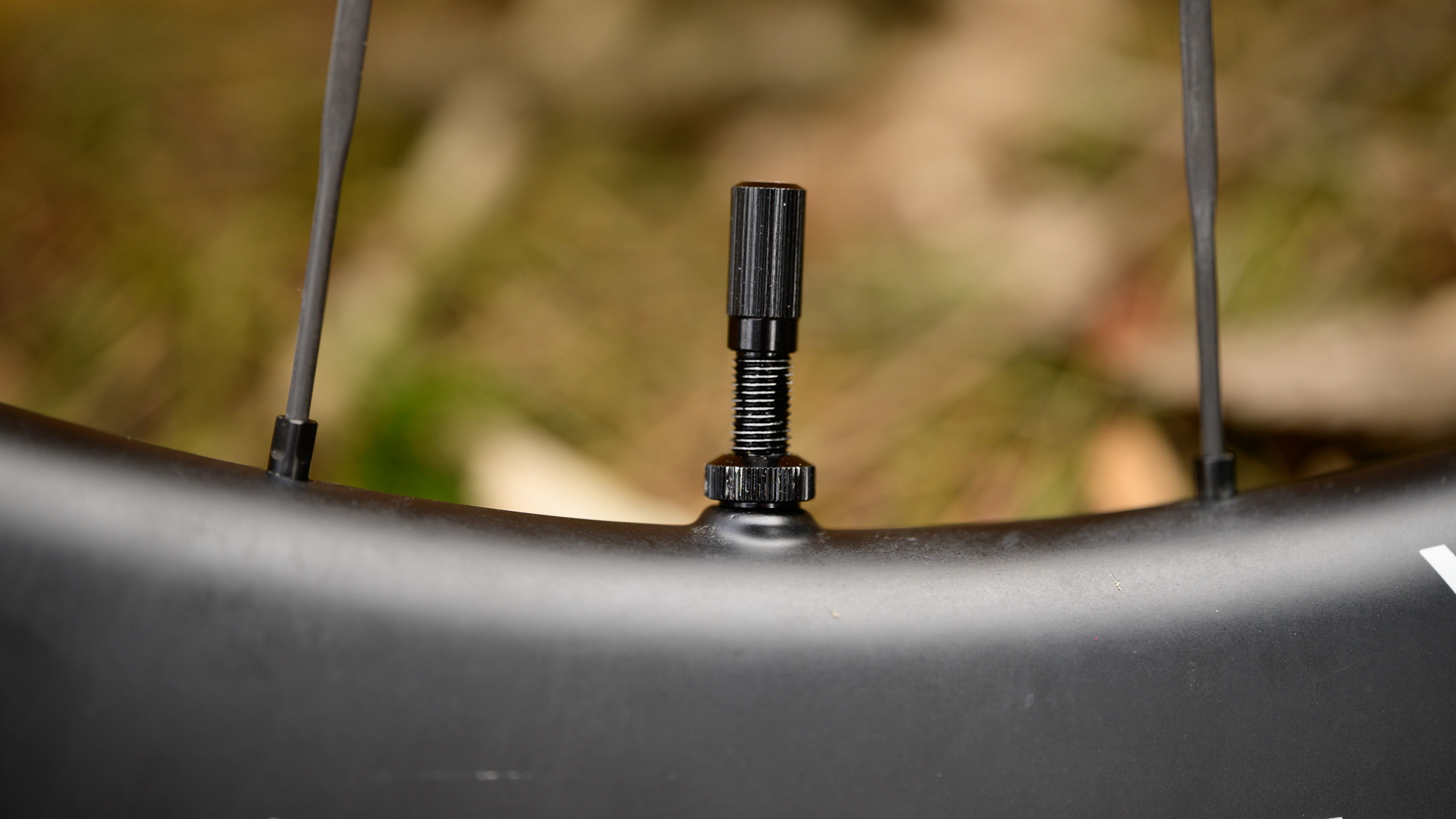
Design and aesthetics
If I showed you a Fillmore valve installed in a tyre you probably wouldn't notice anything different. It's a valve stem like any other and available in lengths of 50, 70, or 90mm. It’s made of 7000 series aluminium and threaded most of the way up. There is a retaining nut that's nicely angled on the top and, on the side closest to the rim, there's a bit of a ledge designed to fit inside the valve stem hole. On the inside of the rim, not that you could see this but it's worth noting, there is a round and angled bit of rubber and a Reserve logo.
None of those details are all that unique. It's certainly not a cheap valve stem but you can find other high-quality options that are very similar from Schwalbe. Muc-Off valve stems are even a bit of an upgrade given that you can order colours without an extra cost. Reserve does offer colours but it’s another cost on top of the base price to get a coloured cap.
The one thing you might notice is that the cap is still on. The vast majority of people don't bother with a cap. Even with nicer quality caps, again like Muc-Off, it's rarely worth the hassle of keeping a cap safe. I've seen some caps with a valve core removal tool built in but the Reserve cap is a simple cylinder with a logo on it. So why is the cap still in place?
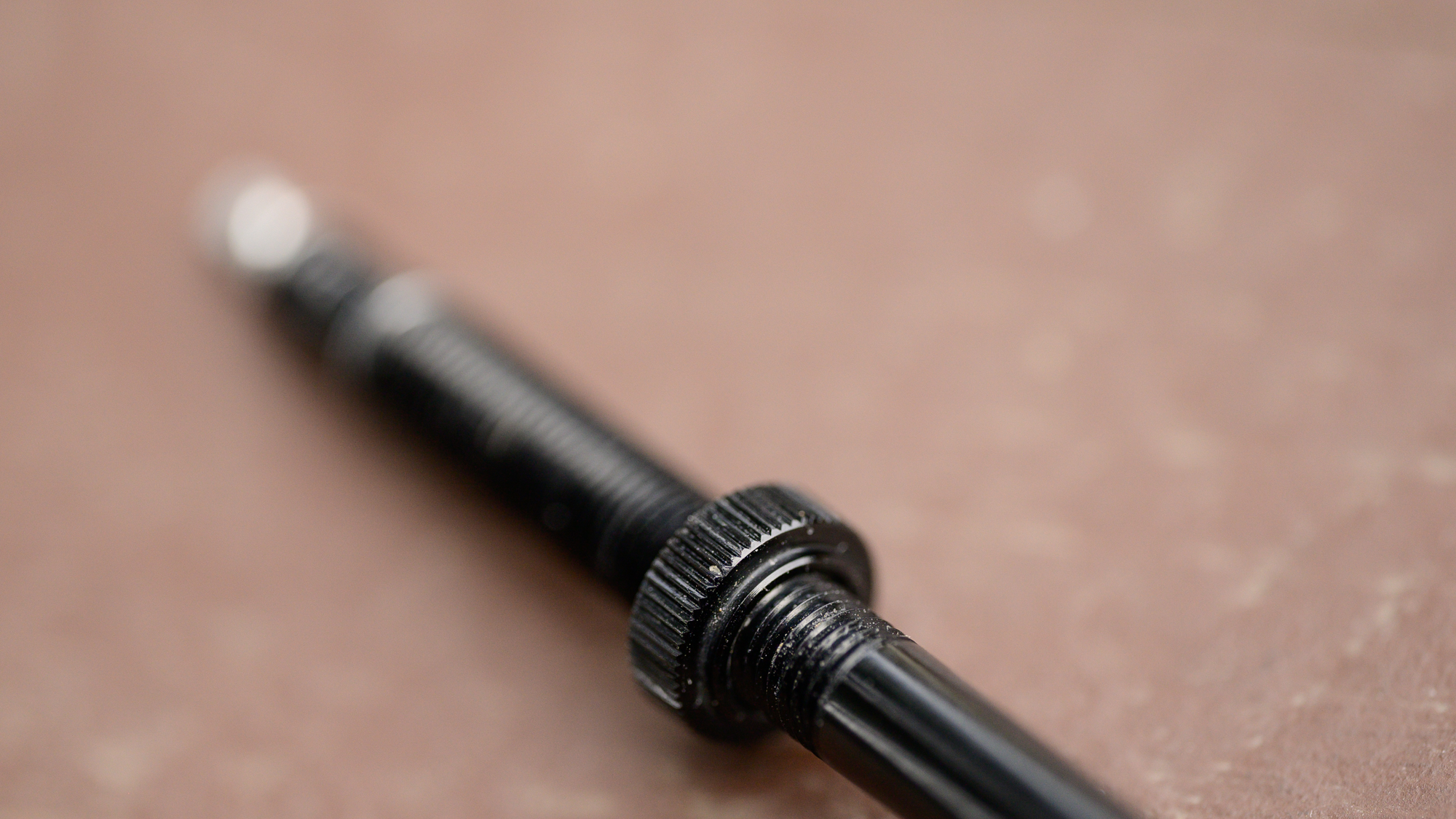
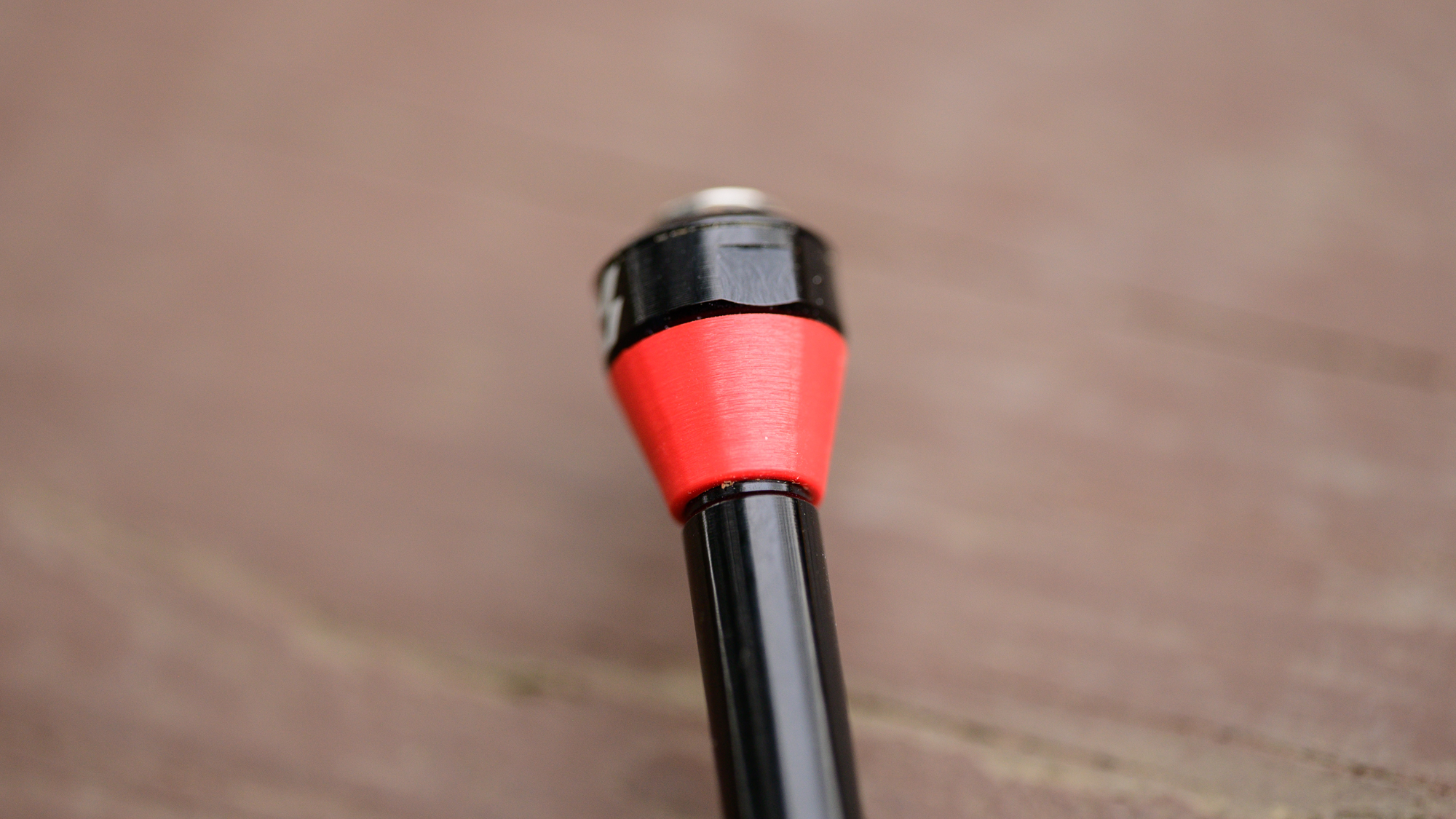
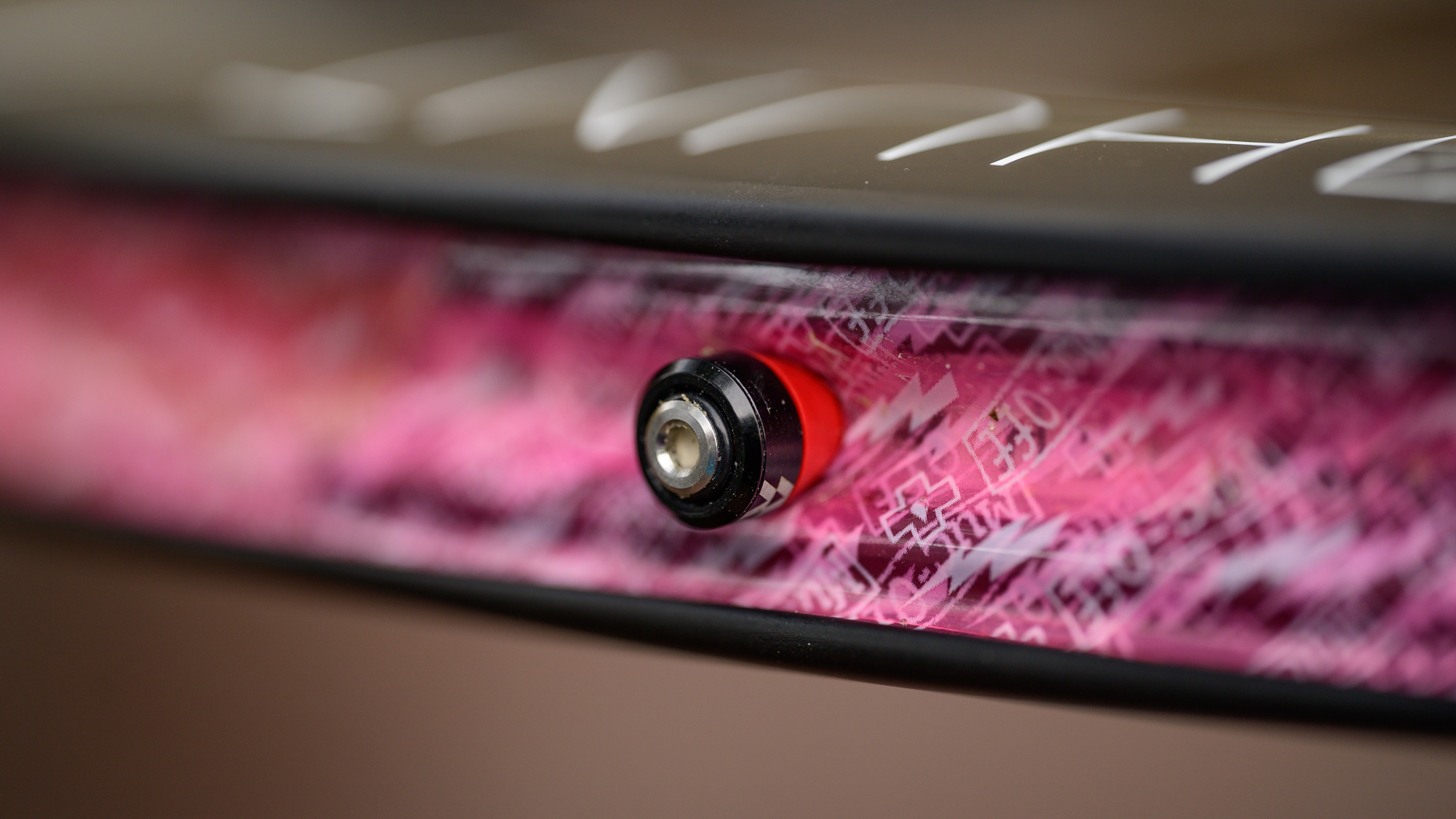
The valve cap is still in place because it conceals an entirely new type of valve system. Unscrew it and you will see the tip of a steel poppet. It looks a bit like a standard valve core without the locking mechanism but it’s connected all the way through. The actual valve is at the very bottom where it sits inside the wheel.
To really understand what's happening you'll want to think about what a valve core is. A standard valve core is almost exactly the same mechanism except it's a bit smaller and shorter. There is still a metal rod that connects through a metal sleeve. At the bottom is a flat piece big enough to cover the sleeve and there is rubber around it to help make the seal. The Fillmore valve is the same but it goes all the way through the valve core and the seal is at the bottom rather than being a removable core that sits at the top of the stem.
The only difference is the locking mechanism. A standard valve core has a threading piece at the top that locks it from moving while the Fillmore uses air pressure to keep the core in place. If you want to let air out just press on the top. The cap keeps this from happening accidentally and you can even unscrew the cap just a little if you prefer to limit how much you press the valve down. Pretty simple, right?
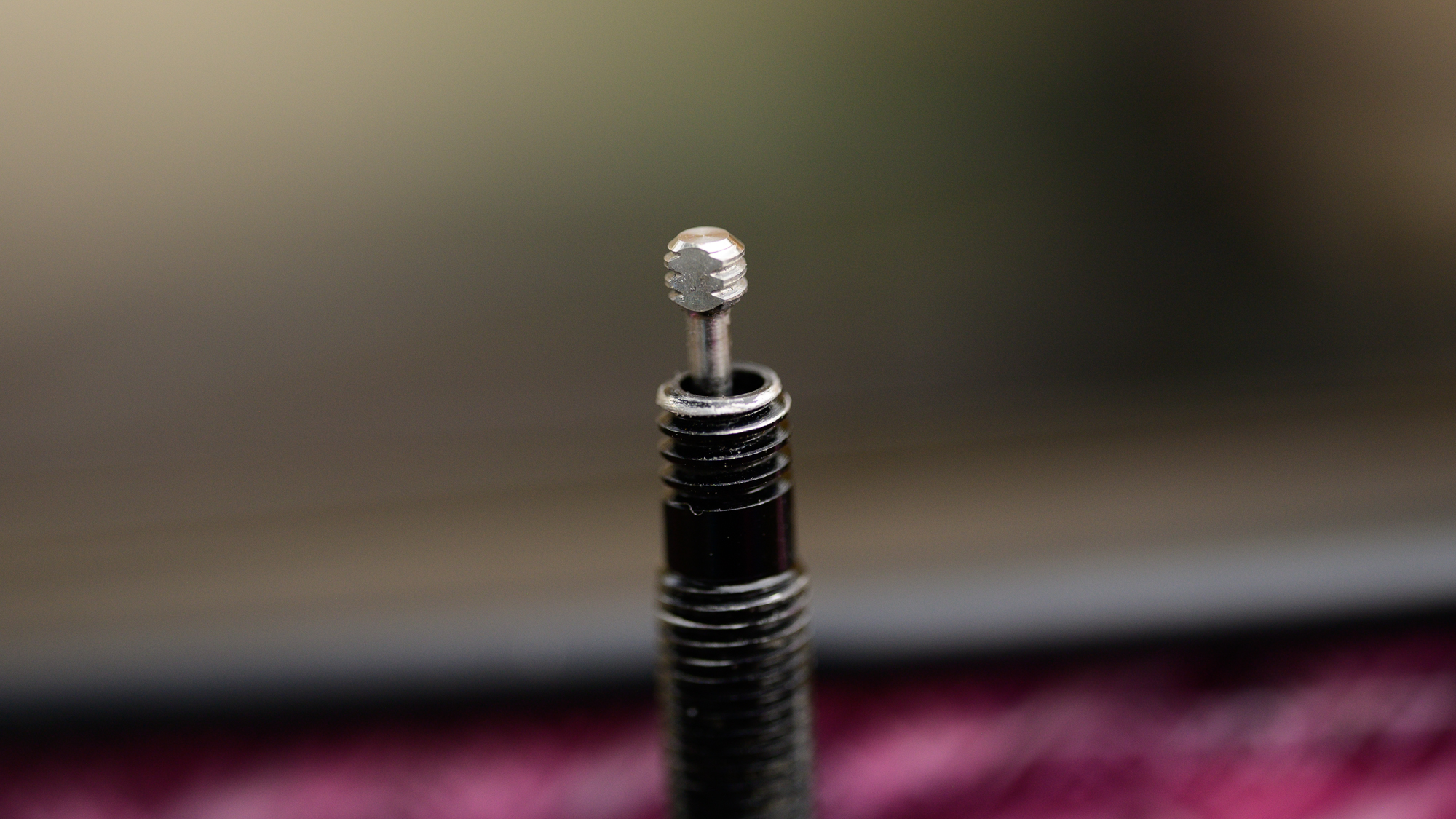
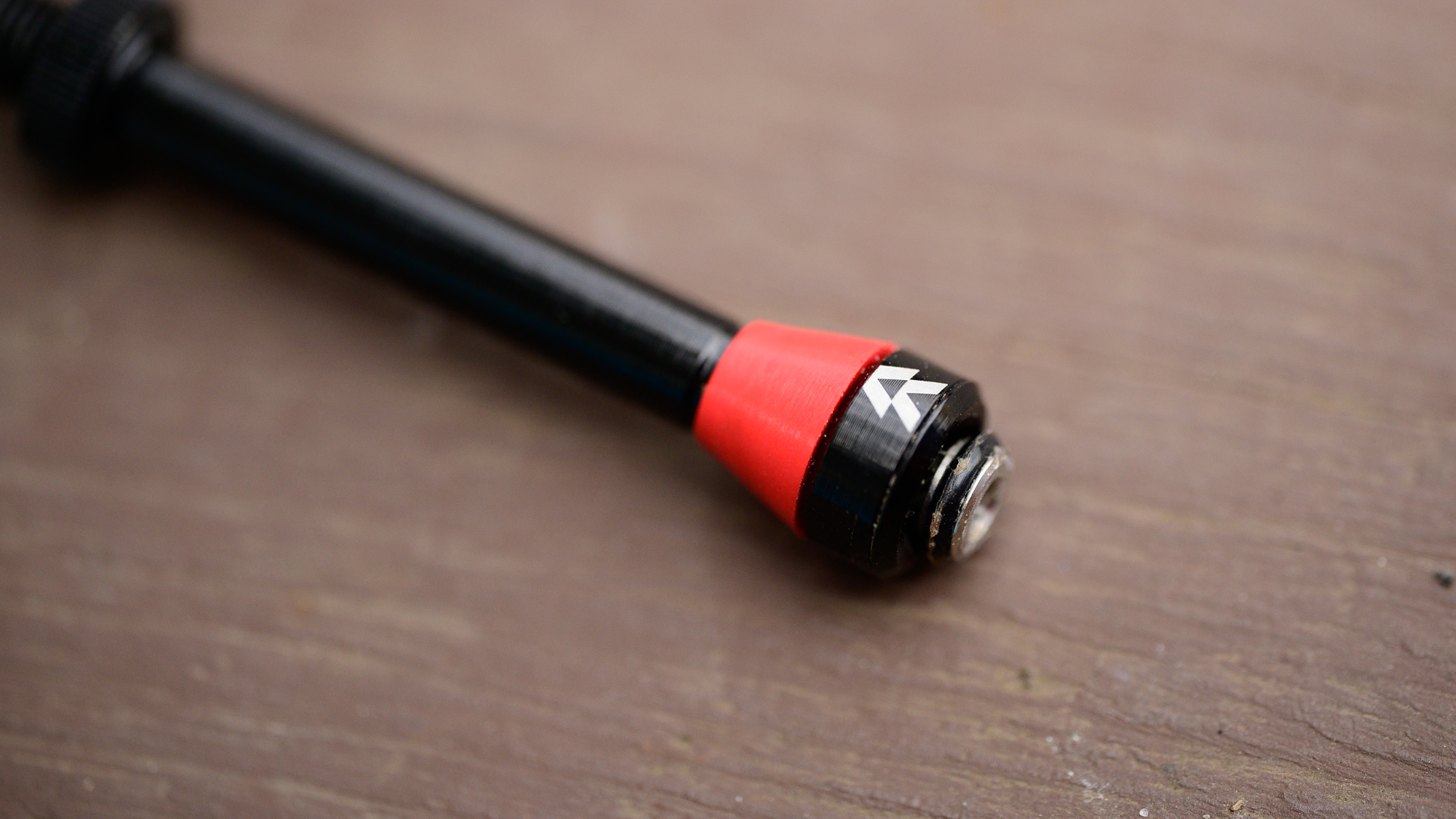
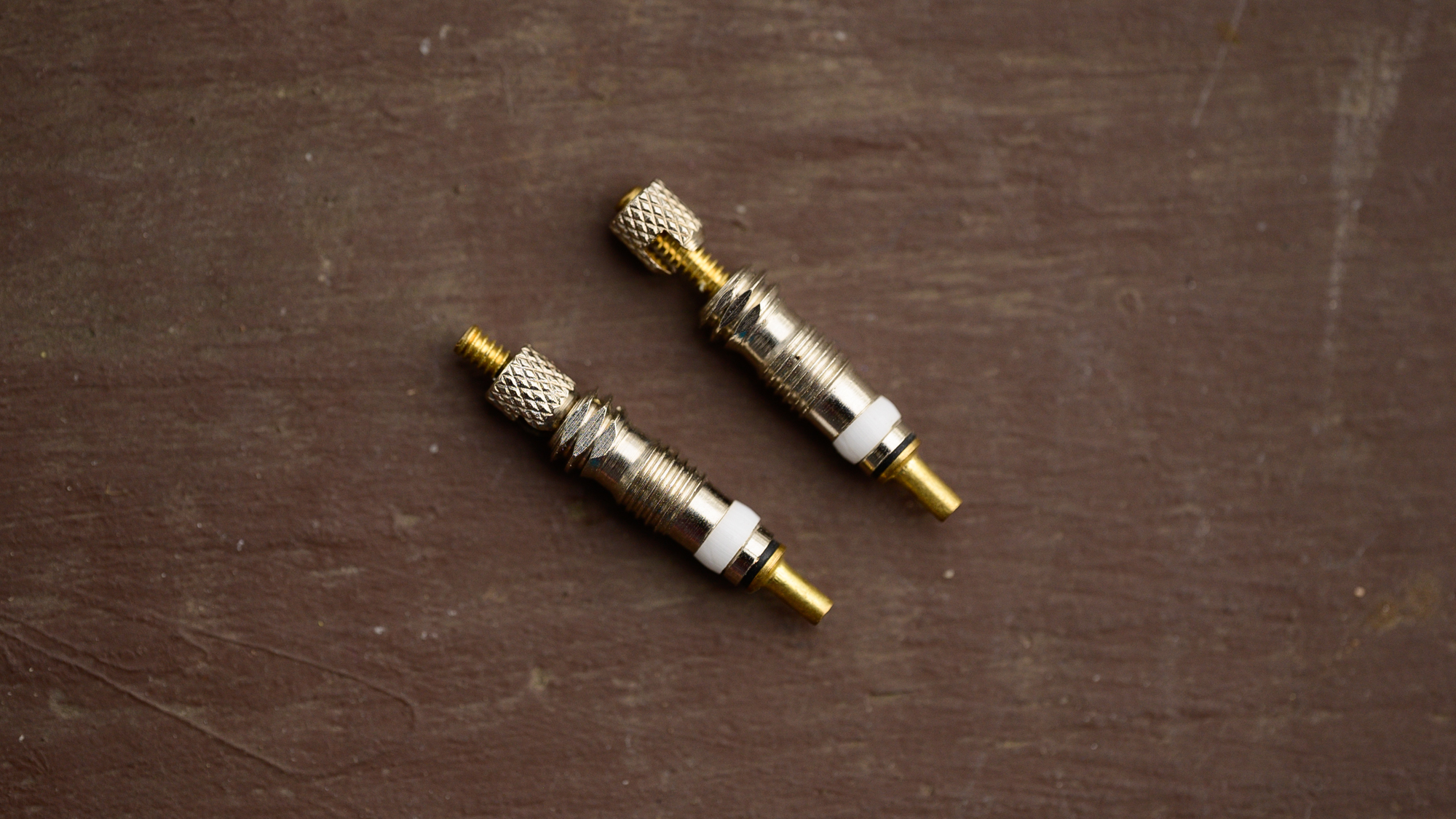
Performance
Fillmore valves are not new. I actually had my copy in hand at the end of last summer but even that was late. Ostensibly I was waiting for the right lengths for deep carbon wheels. The real reason though has a lot more to do with my understanding about how to set up tubeless tyres.
In that article, I talk about two details that are absolutely key to my hesitation here. The first is that it's always rim tape that's the problem. If you can't get a tyre onto your tubeless wheel you need to retape the wheel. It doesn't matter if the wheel is fresh from the factory or the shop. It doesn't even matter if you taped it yourself five minutes ago. Tubeless tape fails in shipping regularly, it's why Enve doesn't tape their wheels for you, and when you put the valve through the tape, it's incredibly common to open up a leak. My advice is to always have extra tape on hand, my favourite is Muc-Off, but also to seat the tyre before you add sealant.
Don't struggle with a tyre that won't seat. You don't need a compressor, you just need new tape. Which is no problem if you haven't added sealant but is a huge problem once there is sealant in there. That's why I always seat the tyre then inject the sealant with a Park Tool TSI-1 Tubeless Sealant Injector. The problem is that a sealant injector like that won't fit through the Fillmore valve.
Still, this is what I do so I took the plunge. I wrestled my tyres onto my rims then sat down to take a breath. I used a tyre lever to open up a small space and used the injector to put 2-oz of sealant into the unseated tyre. Being careful not to make a mess I grabbed my preferred tubeless pump, the Topeak Tubi 2stage, and promptly seated the tyre. No problem, these valves were looking pretty awesome.
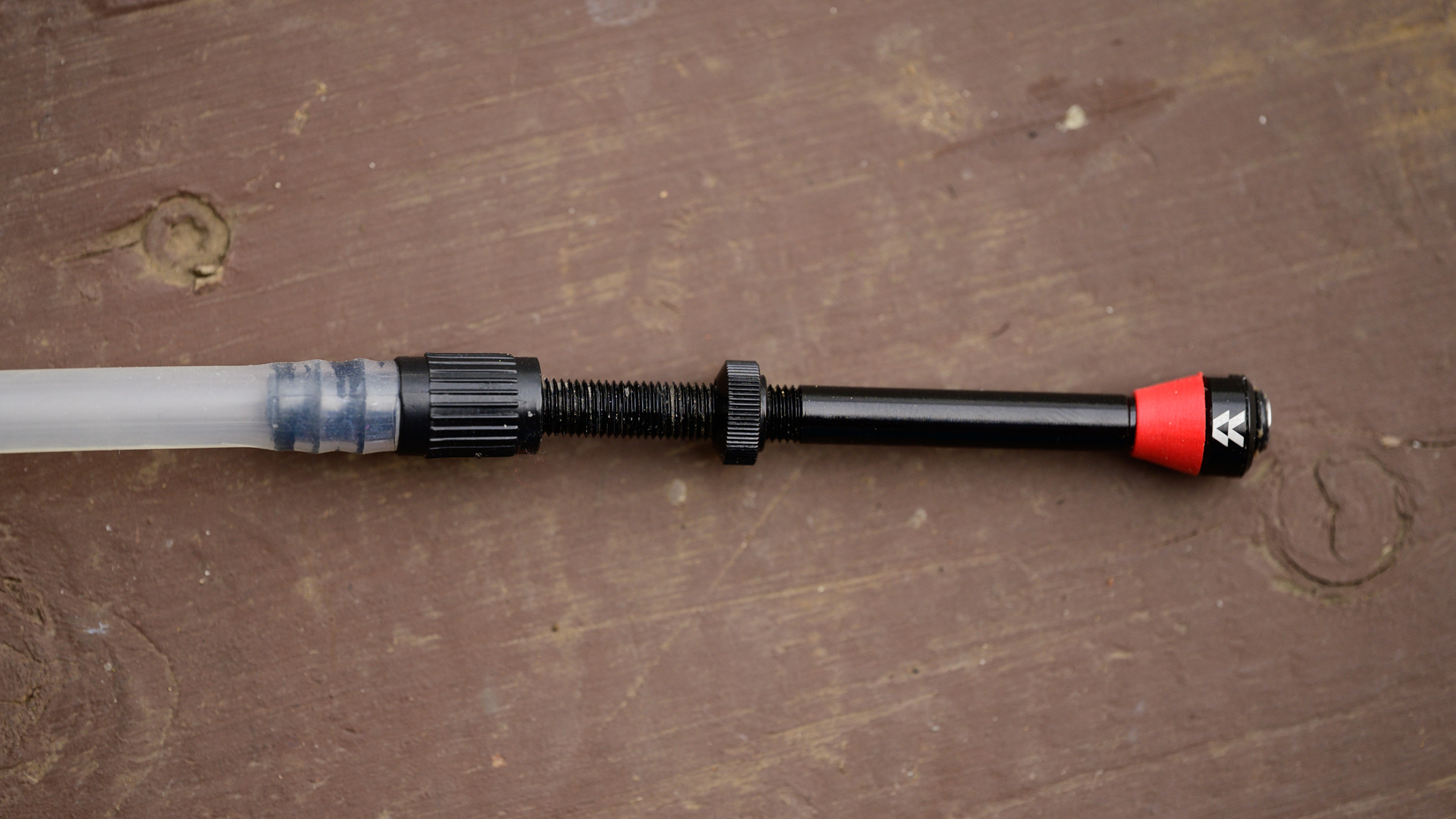
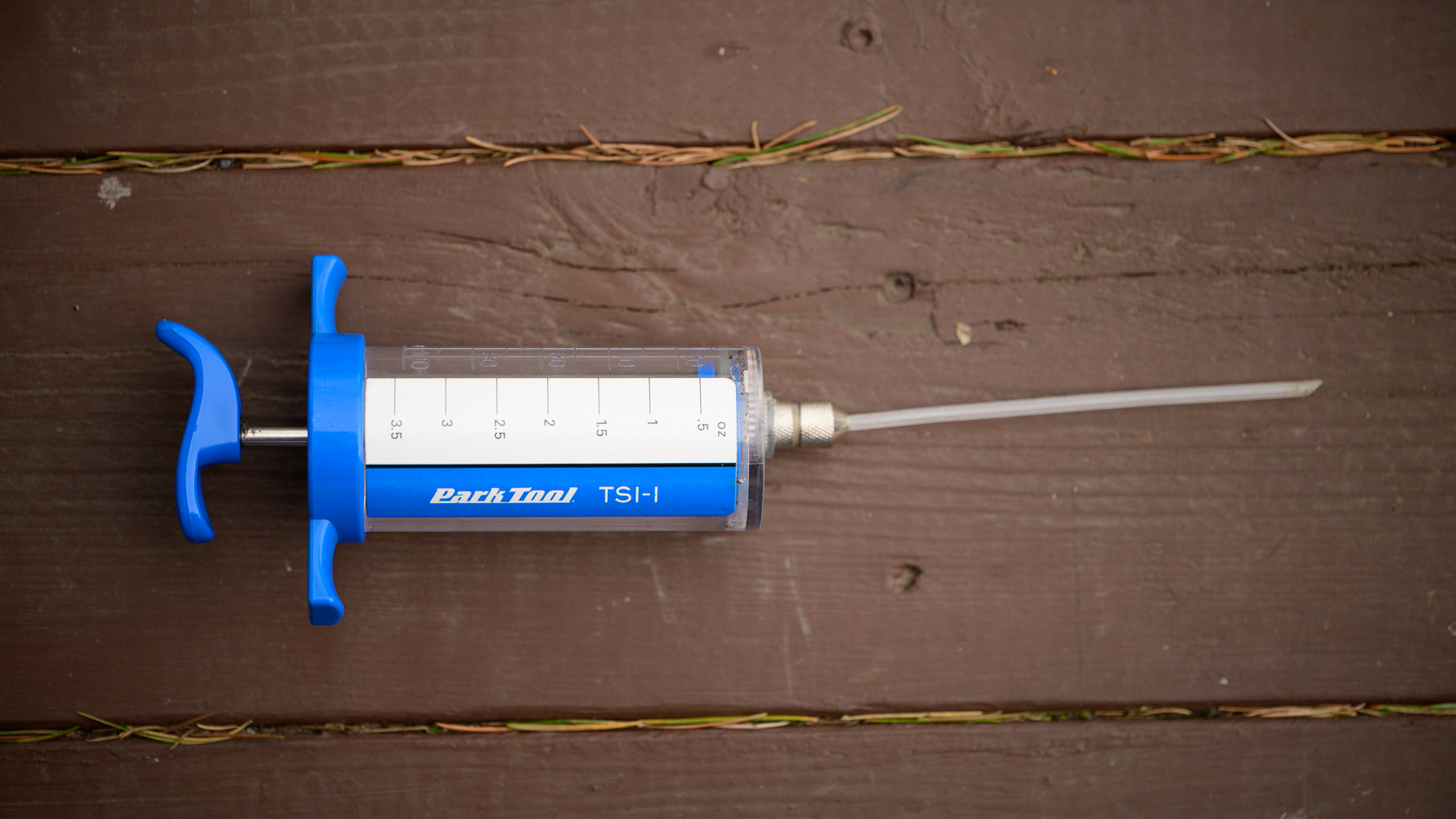
Then I tried the same on the second tyre. This time sealant went everywhere and I swore before promptly vowing that I would set these valves on fire and never touch them again. Or, if I'm being honest, I sucked out whatever sealant was still in the tyre then pulled it off and retaped the wheel. This time I seated the bead without sealant, deflated it and very carefully fed sealant through the Fillmore valve in a way that made a mess but more or less worked. I then later complained to a friend who liked these valves.
This is where I look foolish for a good cause. It turns out that, as with most tubeless issues, the problem isn't the design. I just needed new tools. It's possible to use Fillmore valves just like other valves but you need a specific sealant injector that's different from most.
Generic, or not, most sealant injectors are like the one from Park Tools. Stans No Tubes instead makes "The Injector" which threads onto the outside of the valve core. It works just fine with the Fillmore valves and you can go ahead and wrestle with the setup and seat the tyres without sealant. Once things are good, deflate the tyre, add sealant and reinflate. With that piece of knowledge, the Fillmore valves do solve a lot of issues.
Once I understood how to use them, Fillmore valves mostly work like other valves except they don't ever clog. You never run into the issue where you can't get the core to stop leaking air because it's partially clogged. They do also flow more air but I always remove the valve core to seat tyres so that's not really an issue. Instead what's nice is that you can remove the pump and let the tyre sit without sealant under pressure to see if it's leaking. If I have the time, it's something I often do to be sure there's no issues. Currently that means taking the pump off, adding the valve core back in, and reinflating one more time. The Fillmore valves simplify that a little.
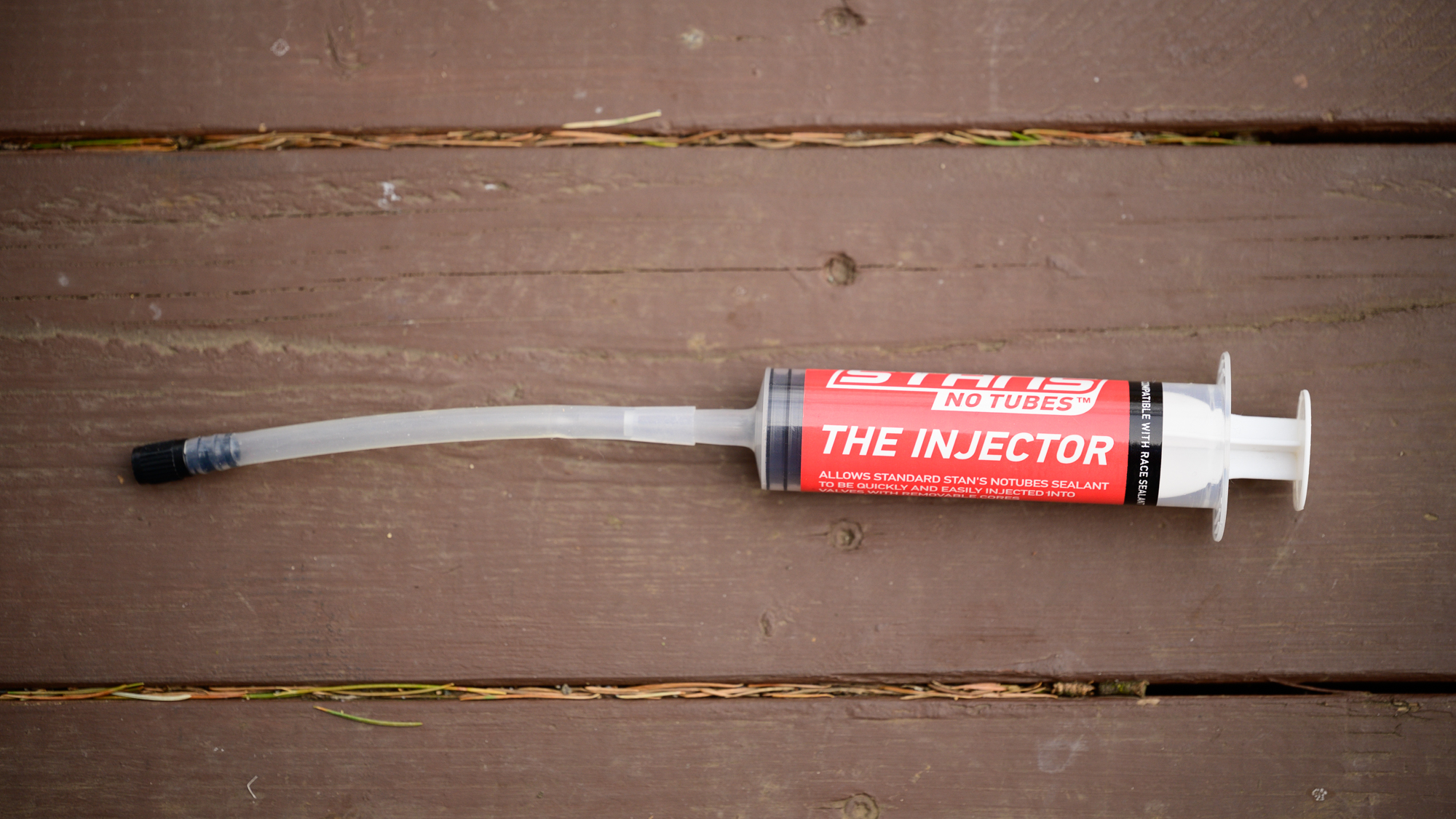
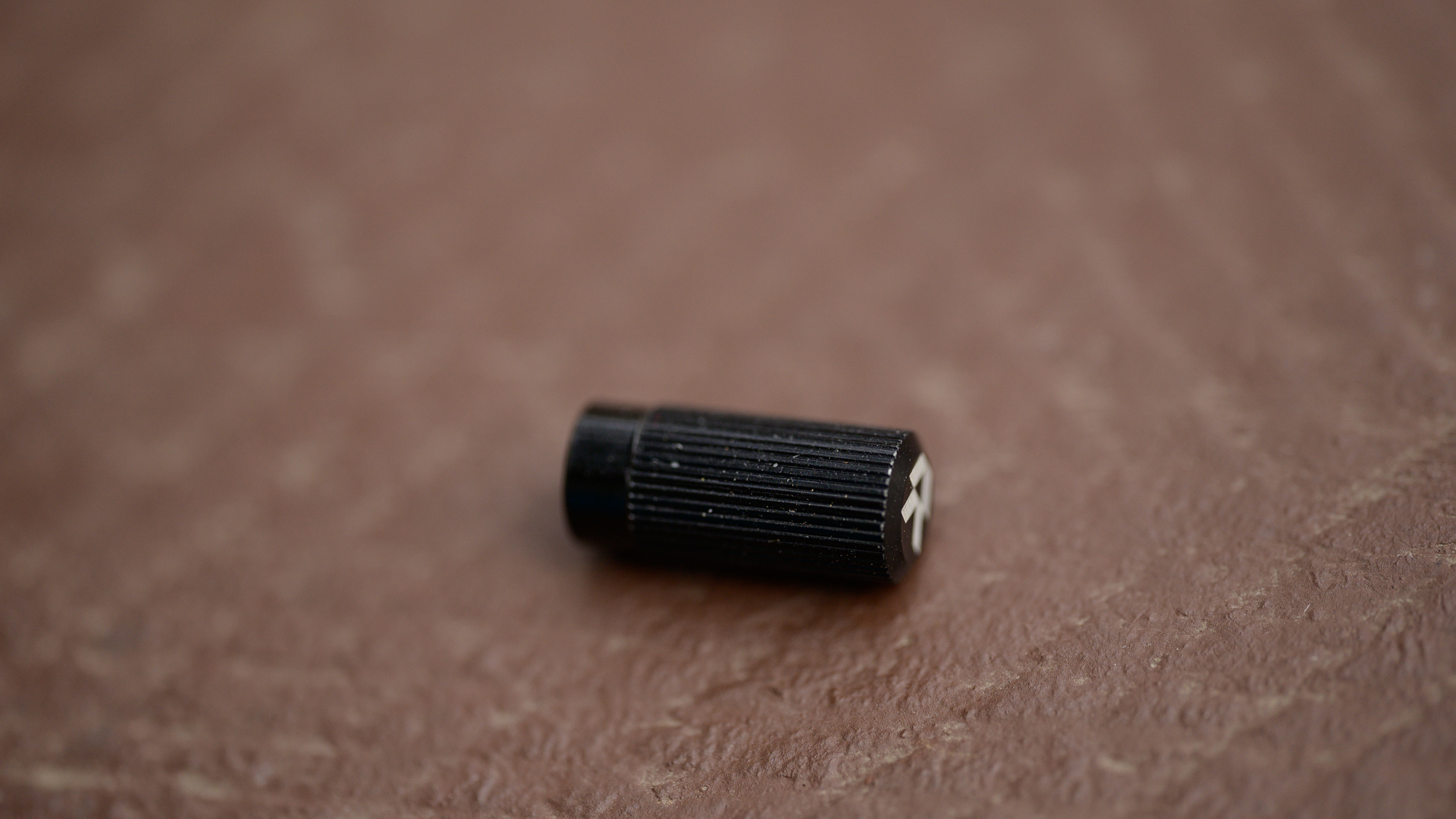
Verdict
Most discussion about the Reserve Fillmore valves revolve around the amount of air they can flow. The brand claims 3x the amount helps seat tubeless tyres and I think that resonates with a lot of people. The thing is that with a good pump and tape that is set up correctly, you shouldn't need extra flow to seat tubeless tyres. If that's all you are trying to solve, look elsewhere.
That doesn't mean that the Reserve Fillmore valves aren't worth getting though. What you can expect with the upgraded valves is the end of clogs that mean the first few pumps when topping off a tyre has to break through the sealant. You can also expect to eliminate clogged valves that leak air and require swapping valve cores. Small details to be sure, but you need valves anyway and this is an opportunity to fix a few things.
There are also some downsides though. Unless you happen to have a sealant injector that threads on, you'll need a new one. You will also lose the ability to suck sealant into the injector if you change tyres. That's a function of the injector but it's directly related so it's worth noting. Also, while the price isn't huge it is quite a bit more expensive than the alternatives.
That said, I'm cooler than some on the idea of the Fillmore valves. I haven't gone out and swapped every wheelset I have. Now that there are long lengths available though, I have found it to be an upgrade and I've been using them most of the time when testing new wheels.
| Design and aesthetics | The best kind of design feels like it should have already existed but aesthetically there should be no charge colour options. | 7/10 |
| Weight | There are lighter options but we are splitting hairs here. | 8/10 |
| Usability | They just work once you understand the tools needed. | 10/10 |
| Quality | High quality metals and precision machining along with high quality rubbers. Nothing to complain about here. | 10/10 |
| Value | Double the price of the cheapest options but these are even over the top of other high quality options. Unique in the market means an extra cost in this case. | 8/10 |
| Overall | Row 5 - Cell 1 | 86% |
Josh hails from the Pacific Northwest of the United States but would prefer riding through the desert than the rain. He will happily talk for hours about the minutiae of cycling tech but also has an understanding that most people just want things to work. He is a road cyclist at heart and doesn't care much if those roads are paved, dirt, or digital. Although he rarely races, if you ask him to ride from sunrise to sunset the answer will be yes. Height: 5'9" Weight: 140 lb. Rides: Salsa Warbird, Cannondale CAAD9, Enve Melee, Look 795 Blade RS, Priority Continuum Onyx

